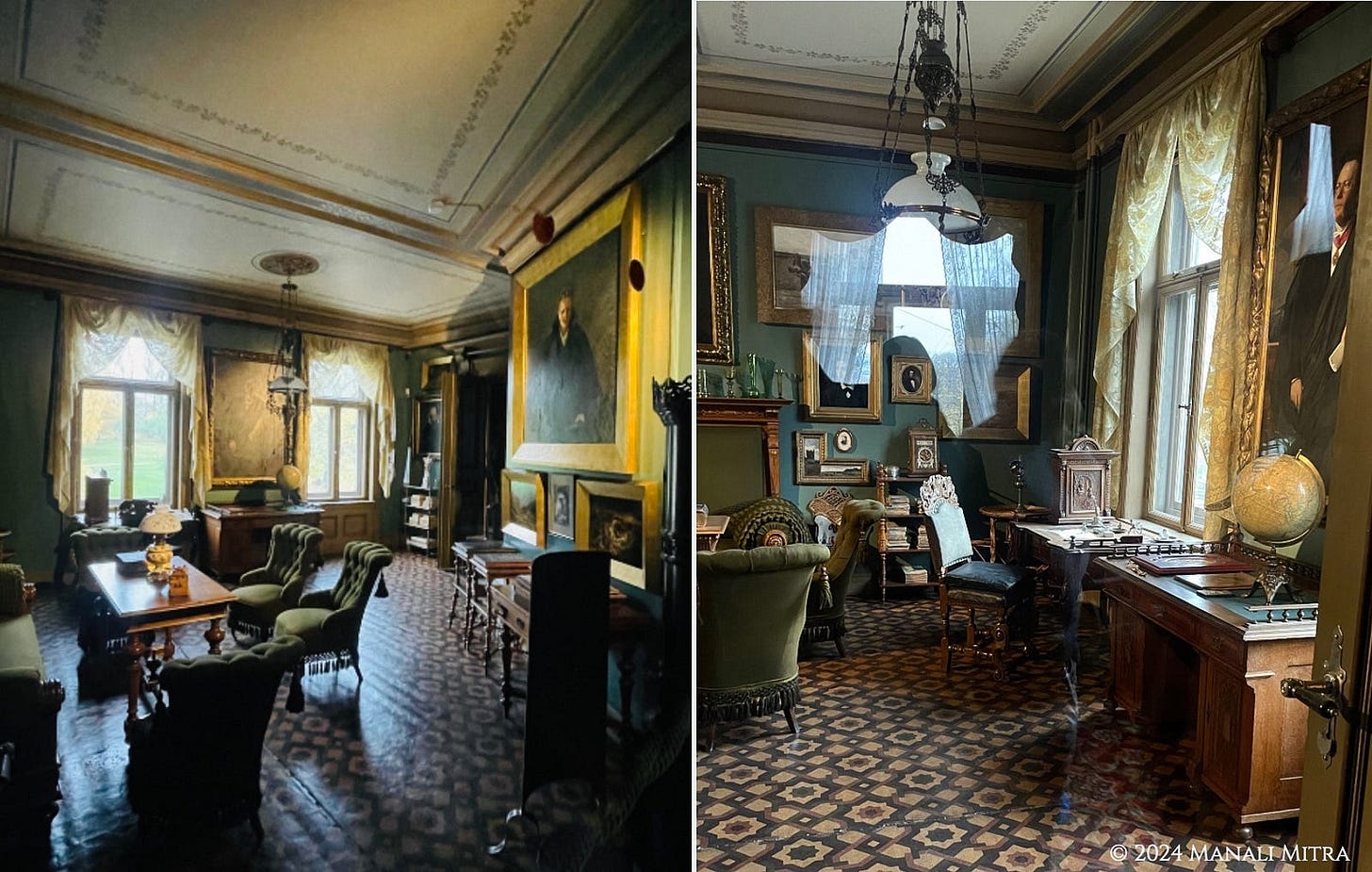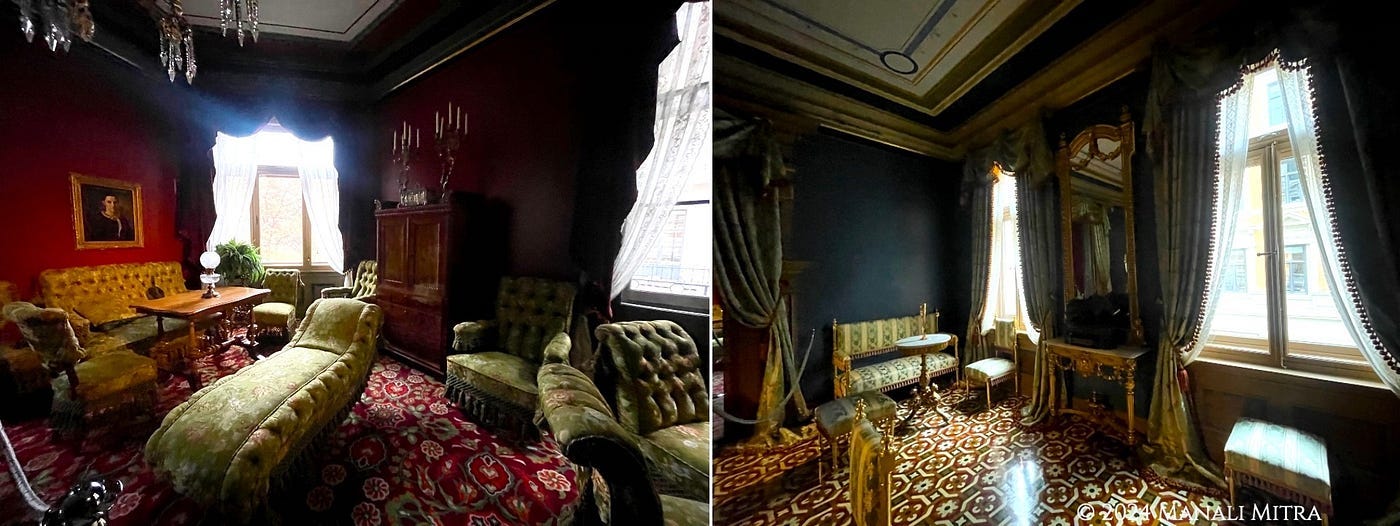
“Tvertimod! (On the contrary!)” — Those were Henrik Ibsen’s last words.
He defiantly responded to the nurse who said he might be recovering. The irony of his death is that he was defiant till the end — a man who often clashed with societal expectations and whose plays tore down the carefully constructed facades of bourgeois life.
I first read A Doll’s House during my undergrad studies in Comparative Literature. It opened up a whole new world of Ibsen for me. So, I further dove into Hedda Gabler, Peer Gynt, and Ghosts — fascinated by his bold exploration of feminism and human complexity. Years later, when my son was studying Doll’s House for his IB Diploma, I revisited the play, and the “door slam” still echoed. In 1990, after watching Ganashatru, an Indian film directed by Satyajit Ray, based on Ibsen’s An Enemy of the People, I had to read the original play. The play is still so relevant — it eerily parallels the recent pandemic, where the truth about public health was often overshadowed by economic interests, much like Dr. Stockmann’s struggle against a society unwilling to face uncomfortable truths.
On my recent trip to Oslo, I made a point to visit Ibsen’s home — where he spent his final ten years after his self-imposed exile in Germany and Italy.

The tour began in a dimly lit entrance hall, only large enough for a few visitors to slip off their shoes and don disposable foot covers to preserve the museum’s pristine order. I had booked the English tour, and our tour guide started by pointing to the room on the left: Ibsen’s study.
“I will have a large study with direct access from the entrance hall so that the people who are looking for me do not have to enter any other room in the home.” — Henrik Ibsen in a letter to Suzannah (source)
To my surprise, across his desk hung an oil painting by Christian Krohg of his fierce rival, August Strindberg! Ibsen called it “The Emerging Madness.”He confessed he couldn’t write a line without “that madman… staring down at me.” With Strindberg’s fevered gaze, Ibsen found an unlikely muse, a critic hovering above, provoking his discipline and pushing him beyond his boundaries — their silent confrontation turned rivalry into creative energy!
At the far end of the room, was another desk facing a large window overlooking the street. On that desk rested a tiny cabinet along with some intricately carved figures. Allegedly, Ibsen would turn to these figures when he struggled with writer’s block or needed fresh ideas. Whenever creativity eluded him, he would take the figures out and arrange them into scenes, allowing their silent forms to guide his imagination and break the creative deadlock. He wrote his last two plays: John Gabriel Borkman (1896) and When We Dead Awaken (1899) sitting in this study. I got a better view from the red parlor. The study was cordoned off by glass, but the views were clear enough.

Suzannah Ibsen was fluent in several languages, she often translated for her husband aloud, pushing him to keep writing. Each day at 11:30 am, Ibsen would head to the Grand Café for his coffee. But if he hadn’t written enough she would urge him to stay home and write. Their son, Sigurd — later a Norwegian Prime Minister — once joked that without Suzannah’s constant prodding, neither he nor his father would have achieved much.
Although their marriage became strained in later years, the bond between Ibsen and Suzannah endured in subtle ways — through the quiet, steadfast support she gave him throughout his career. Ibsen never underestimated Suzannah’s importance in his life. Her influence on his work was tremendous — her progressive views on gender roles, and her frustrations as a woman bound by the expectations of her time, defined much of Ibsen’s writing.

Next, we stepped into the red parlor, a cozy salon adjacent to the study, draped in rich velvet and brocade, where a portrait of Magdalene Thoresen, Suzannah’s stepmother, and a renowned Norwegian poet, novelist, and playwright, hung on the wall. The heavy, ornate furnishing, is believed to have been chosen by Ibsen himself. The big windows opened up to a view of the park across the street, adding a touch of brightness to the otherwise dark red walls.
Next, we entered the adjacent blue parlor, where the blue walls, white-and-gold furniture, and hand-painted linoleum flooring exhaled theatricality. The ceiling-mounted candelabra and the dark tone of the piano added to the room’s grandeur. Interestingly, Ibsen had banned the piano from being played, as its sound distracted him. Later, he let his daughter-in-law, Bergliot, an opera singer, play — only at designated times. I hadn’t expected such strictness from a man who advocated for women’s freedom.
What impressed me most was Suzannah’s library, where her chair still stands — the very spot where she sat and passed away. Even though Ibsen and Suzannah’s intimacy had faded, Ibsen would join her in the evenings sitting in one of the wicker chairs listening to Suzannah read aloud, translating books, letters, and newspaper articles. She called her library, the “garden of the soul.”

It felt surreal seeing Ibsen’s bedroom, where he spoke his final words “On the contrary!” Immediately after, he slipped into a coma and passed away the next day on 23rd May 1906 at 78. Though the room had a glass partition, the views from both sides were unobstructed.
Ironically, the rooms in this apartment exuded a bourgeois lifestyle that Ibsen often criticized in his plays. All the heavy furnishings with the interconnected rooms, which never fully opened to each other, created a tight and almost oppressive sense of continuity, much like the relationships between the characters in his work — reflected a man caught between his ideologies and reality. Walking through this apartment was like being given an unexpected, intimate glimpse into the world of one of my favorite playwrights, revealing a side of him I hadn’t anticipated.

Ibsen and his wife Suzannah lived in this apartment from 1895. When Suzannah passed in 1914, the apartment was taken apart, and its furnishings were dispersed to different museums. Kristiania’s (now Oslo) city officials preserved Ibsen’s study and bedroom, moving them to the Norwegian Folk Museum. The library went to what is now the Telemark Museum in Skien, and the dining room to the Ibsen House Museum in Grimstad, while the remaining pieces stayed within the family. In 1990, actor Knut Wigert took the initiative to rent the apartment to open it to the public. The Norwegian Folk Museum took responsibility for its upkeep in 1993 and began a careful restoration, with Ibsen’s study receiving a full restoration. The Ibsen family contributed significantly — Ambassador Tancred Ibsen Jr. donated family heirlooms from his great-grandfather, while his cousin, actor Joen Bille, helped locate and reclaim original furnishings. Support for the project also came from the Ministry of Culture. (Reference )

The museum is a phenomenal tribute to the genius of Henrik Ibsen and shows Norway’s dedication to preserving the memory of one of its greatest playwrights. The lengths to which they went — even retrieving Ibsen’s original bathtub from a farm in Hadeland, where it was used as a livestock watering trough, indicate their respect for his legacy. Such devotion to safeguarding cultural heritage is inspiring; if more countries, especially India, honored their great minds by preserving their homes as museums, future generations would have the privilege of connecting with the lives and legacies of these remarkable creators.

© 2024 Manali Mitra. All Rights Reserved.




